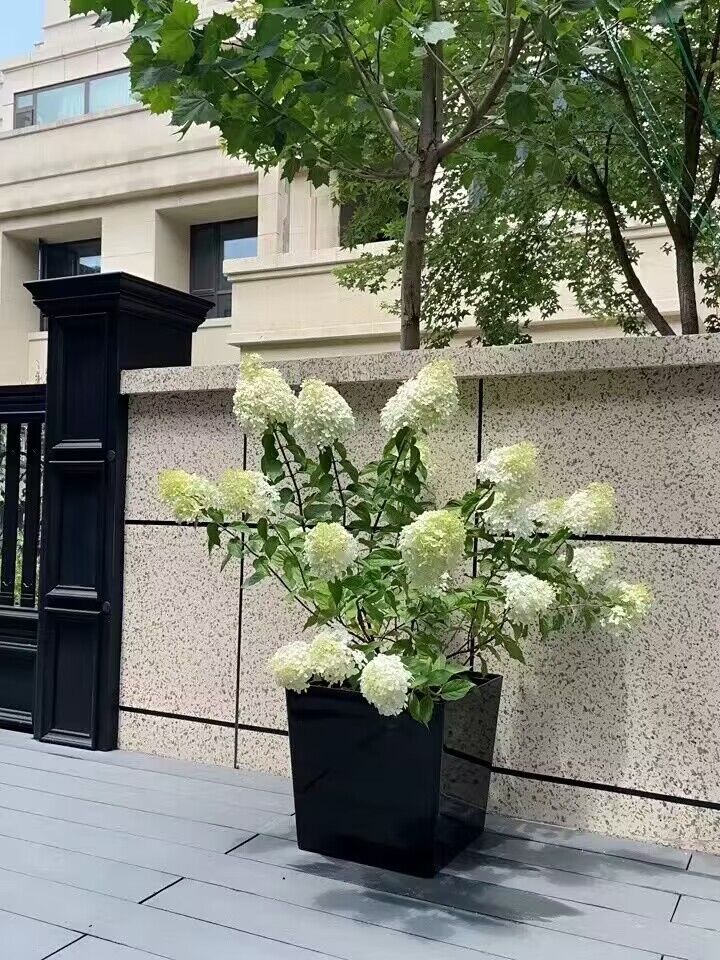High Quality Plastic Outdoor Balcony Pots Factory Manufacturer
Plastic balcony pots have become an essential item for urban gardening and home decor, providing a simple yet effective way for people to enjoy plants and flowers even in limited spaces. These pots are especially popular in apartments, balconies, and terraces where traditional gardening might be difficult or impossible due to space constraints.
1. Raw Materials Selection
The production of plastic balcony pots begins with selecting the appropriate raw materials. The primary material used for plastic balcony pots is polypropylene (PP) or high-density polyethylene (HDPE). These plastics are chosen for their durability, resistance to the elements, and ease of molding. Additionally, the lightweight nature of these materials makes them ideal for use in balcony settings where the weight of the pot can be a concern.
The raw plastic is often mixed with additional components such as UV stabilizers to protect the pots from sun damage, ensuring they maintain their color and structural integrity when exposed to sunlight. This is particularly important for plastic balcony pots, which are typically used outdoors and must withstand varying weather conditions.
2. Extrusion and Injection Molding
Once the raw materials are prepared, the manufacturing process moves into the extrusion or injection molding stage. The method chosen depends on the design and complexity of the plastic balcony pots.
Extrusion molding is commonly used for creating large, cylindrical shapes such as long balcony planters or window boxes. In this process, the raw plastic is melted and forced through a die to create the desired shape. Once the plastic cools, it forms a continuous piece that can be cut to size and used to create various types of pots.
Injection molding is used for smaller, more detailed designs, such as those with intricate textures or decorative features. In this method, molten plastic is injected into a mold under high pressure, filling the mold's cavity to form the shape of the plastic balcony pots. Once the mold cools and solidifies, the finished pots are ejected from the mold and prepared for further processing.
Both extrusion and injection molding are efficient and cost-effective methods that allow manufacturers to produce large quantities of plastic balcony pots with consistent quality and precision.
3. Cooling and Solidification
After the plastic has been molded, the next step is cooling and solidification. During this phase, the plastic balcony pots are carefully cooled to ensure that they retain their shape and structural integrity. The cooling process must be controlled to avoid warping or deformation, as plastic is sensitive to temperature fluctuations.
For pots produced using extrusion molding, the cooling process may involve passing the newly shaped plastic through a water bath or cooling tunnel. For injection-molded pots, the molds are typically cooled through a system of water channels embedded within the mold itself. This helps to prevent the plastic from cooling too quickly or unevenly, which could result in defects.
4. Trimming and Finishing
Once the plastic balcony pots have cooled and solidified, they are removed from the molds and undergo trimming and finishing. This step involves removing any excess plastic (known as flash) that may have formed around the edges during the molding process. Flash is carefully trimmed away using precision cutting tools or automated machines, leaving behind a smooth and clean edge.



 EN
EN  English
English 中文简体
中文简体 Español
Español























 Companies adhere to the "let plants fall in love with appropriate plant hall, let green into the tens of thousands of people for the purpose"
Companies adhere to the "let plants fall in love with appropriate plant hall, let green into the tens of thousands of people for the purpose" Fansan industry zone, Shabu Town, Huangyan, Taizhou City, Zhejiang province, China
Fansan industry zone, Shabu Town, Huangyan, Taizhou City, Zhejiang province, China +86-15325615991
+86-15325615991 +86-0576-81109093
+86-0576-81109093 +86-0576-81109093
+86-0576-81109093 yizhitang001@gmail.com
yizhitang001@gmail.com